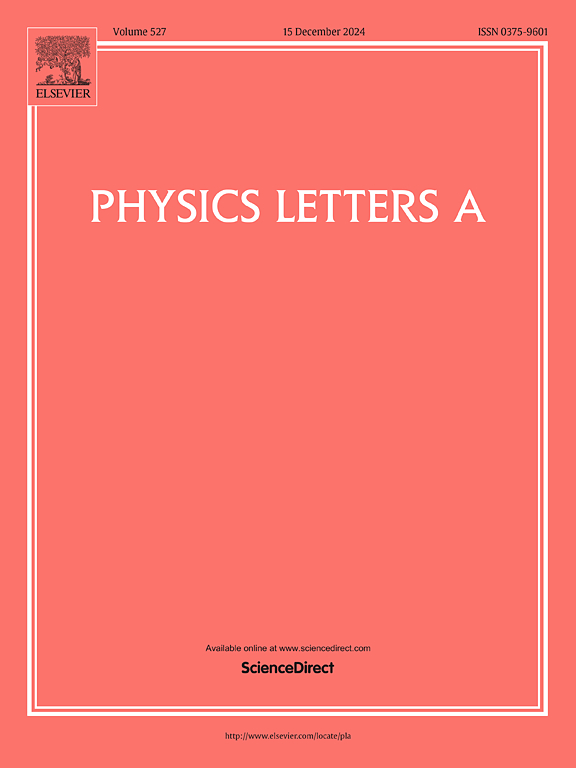Solitonic proton transport in (A−H⋯B−H⋯)n systems
IF 2.3
3区 物理与天体物理
Q2 PHYSICS, MULTIDISCIPLINARY
引用次数: 0
Abstract
Proton transport along hydrogen-bonded (HB) chains is essential for achieving high electric conductivity in ice crystals and facilitating bioenergetic transport within membrane proteins. Soliton models have been proposed to explain the mechanism of the proton transport, with their dynamics studied both analytically and numerically. In this study, I examine how the soliton dynamics is affected by the asymmetry of double-well potential and the alternative array of two types of heavy ions. As the special cases, the HB chain also contains a symmetric double-well potential and one type of heavy ions. I present a soliton model that has a new interaction between a proton and its neighboring heavy ions, which is valid for the HB chain with an asymmetric double-well potential. A mathematical analysis using a continuum approximation demonstrates that the newly identified interaction produces solitons in the coupled motion of protons and heavy ions. The outcome is influenced by the type of heavy ions involved and the symmetry of the double-well potential. It is also found that the proton transport in the HB chain with two types of heavy ions is represented by solitons with an effective mass of these heavy ions. Furthermore, numerical simulations are performed to examine the stability of solitons in the discretized HB model. They also show a kink-like solution in the HB chain with an asymmetric potential and demonstrate the effects of thermal fluctuations and an electric field on the stability of solitons.
A-H⋯B-H⋯)n 系统中的孤子质子传输
质子沿着氢键(HB)链转移对于实现冰晶的高导电性和促进膜蛋白内的生物能传输至关重要。有人提出了孤子模型来解释质子传输的机制,并对其动力学进行了分析和数值研究。在本研究中,笔者考察了双阱电位的不对称性和两种重离子的交替排列对孤子动力学的影响。作为特例,HB 链也包含对称双阱势和一种重离子。我提出了一个质子与相邻重离子之间具有新的相互作用的孤子模型,该模型适用于具有非对称双阱势的 HB 链。利用连续近似进行的数学分析表明,新发现的相互作用会在质子和重离子的耦合运动中产生孤子。其结果受到所涉及的重离子类型和双阱势对称性的影响。研究还发现,质子在含有两种重离子的 HB 链中的传输是通过这些重离子的有效质量的孤子来体现的。此外,还进行了数值模拟,以检验离散化 HB 模型中孤子的稳定性。他们还展示了具有不对称电势的 HB 链中的类激波解,并证明了热波动和电场对孤子稳定性的影响。
本文章由计算机程序翻译,如有差异,请以英文原文为准。
求助全文
约1分钟内获得全文
求助全文
来源期刊

Physics Letters A
物理-物理:综合
CiteScore
5.10
自引率
3.80%
发文量
493
审稿时长
30 days
期刊介绍:
Physics Letters A offers an exciting publication outlet for novel and frontier physics. It encourages the submission of new research on: condensed matter physics, theoretical physics, nonlinear science, statistical physics, mathematical and computational physics, general and cross-disciplinary physics (including foundations), atomic, molecular and cluster physics, plasma and fluid physics, optical physics, biological physics and nanoscience. No articles on High Energy and Nuclear Physics are published in Physics Letters A. The journal''s high standard and wide dissemination ensures a broad readership amongst the physics community. Rapid publication times and flexible length restrictions give Physics Letters A the edge over other journals in the field.
 求助内容:
求助内容: 应助结果提醒方式:
应助结果提醒方式:


